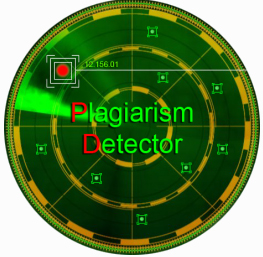Banyumas Tourism Mobile Application UI Design Using the User Experience Lifecycle
Abstract
Abstract−Internship became a must activity as a student in Institut Teknologi Telkom Purwokerto, but in its application, with many media looking for a place to work, students still have difficulty finding a suitable internship place. This study aims to apply Design Thinking and System Usability Scale for designing mobile apps interface to find internship place. Literature review used to find the basis for this research which was used for theories, basic concepts, and methods. Design Thinking is carried out to find a problem that students face. Validating issues was done by doing a survey. And prioritize the problem using challenge matrix. The prototype was done by creating a try-able design that users can try to reach the goal of design made, and test the successful rate using system usability scale. The result of this study is mobile apps design interface and tested using system usability scale with 8 test data had a success rate with value 93.75%. Interface design created can help students find the most suitable place for an internship that matches their skills and wishes.
Full Text:
PDFReferences
M. K. Bakhtiar and A. R. Muslikh, “Aplikasi Pencarian Perusahaan Dan Evaluasi Kinerja Peserta Magang Untuk Kandidat Promosi Pekerjaan Menggunakan Metode Profile Matching,” Seminar Nasional Sistem Informasi, no. September, 2019.
Institut Teknologi Telkom Purwokerto, Buku Panduan Institusi Institut Teknologi Telkom Purwokerto. 2017.
I. Ismail, H. Hasan, and M. Musdalifah, “Pengembangan Kompetensi Mahasiswa Melalui Efektivitas Program Magang Kependidikan,” Edumaspul - Jurnal Pendidikan, vol. 2, no. 1, 2018, doi: 10.33487/edumaspul.v2i1.48.
Undang Undang Republik Indonesia, Undang-undang Nomor 13 Tahun 2003 tentang Ketenagakerjaan. 2003.
S. Samidjo, “EFEKTIFITAS PELAKSANAAN MAGANG INDUSTRI MAHASISWA PROGRAM STUDI PENDIDIKAN TEKNIK MESIN,” TAMAN VOKASI, vol. 2, no. 2, 2017, doi: 10.30738/jtvok.v5i2.2528.
A. A. Razi, I. R. Mutiaz, and P. Setiawan, “PENERAPAN METODE DESIGN THINKING PADA MODEL PERANCANGAN UI/UX APLIKASI PENANGANAN LAPORAN KEHILANGAN DAN TEMUAN BARANG TERCECER,” Desain Komunikasi Visual, Manajemen Desain dan Periklanan (Demandia), vol. 3, no. 02, 2018, doi: 10.25124/demandia.v3i02.1549.
G. Karnawan, S. Andryana, and R. T. Komalasari, “Implementasi User Experience Menggunakan Metode Design Thinking Pada Prototype Aplikasi Cleanstic,” Jurnal Teknologi dan Manajemen Informatika, vol. 6, no. 1, 2020, doi: 10.26905/jtmi.v6i1.3785.
A. M. Schnoes et al., “Internship Experiences Contribute to Confident Career Decision Making for Doctoral Students in the Life Sciences,” CBE life sciences education, vol. 17, no. 1, 2018, doi: 10.1187/cbe.17-08-0164.
F. Seyitoğlu, “Gastronomy students’ internship experience: benefits, challenges, and future career,” Journal of Teaching in Travel and Tourism, vol. 19, no. 4, 2019, doi: 10.1080/15313220.2019.1566044.
S. M. Zehr and R. Korte, “Student internship experiences: learning about the workplace,” Education and Training, vol. 62, no. 3, 2020, doi: 10.1108/ET-11-2018-0236.
B. S. Baert, B. Neyt, T. Siedler, I. Tobback, and D. Verhaest, “Student internships and employment opportunities after graduation: A field experiment,” Economics of Education Review, vol. 83, 2021, doi: 10.1016/j.econedurev.2021.102141.
T. ling Chen, C. cheng Shen, and M. Gosling, “Does employability increase with internship satisfaction? Enhanced employability and internship satisfaction in a hospitality program,” Journal of Hospitality, Leisure, Sport and Tourism Education, vol. 22, 2018, doi: 10.1016/j.jhlste.2018.04.001.
J. Liedtka, “Why Design Thinking Works,” Harvard Business Review, vol. 2018, no. September-October. 2018.
L. Waidelich, A. Richter, B. Kolmel, and R. Bulander, “Design Thinking Process Model Review,” 2018. doi: 10.1109/ICE.2018.8436281.
A. Schönhals, T. Hepp, and B. Gipp, “Design Thinking Using the Blockchain: Enable Traceability of Intellectual Property in Problem-Solving Processes for Open Innovation,” Proceedings of the 1st Workshop on Cryptocurrencies and Blockchains for Distributed Systems, 2018.
M. Pande and S. V. Bharathi, “Theoretical foundations of design thinking – A constructivism learning approach to design thinking,” Thinking Skills and Creativity, vol. 36, 2020, doi: 10.1016/j.tsc.2020.100637.
M. Lynch, U. Kamovich, K. K. Longva, and M. Steinert, “Combining technology and entrepreneurial education through design thinking: Students’ reflections on the learning process,” Technological Forecasting and Social Change, vol. 164, 2021, doi: 10.1016/j.techfore.2019.06.015.
J. R. Lewis, “The System Usability Scale: Past, Present, and Future,” International Journal of Human-Computer Interaction, vol. 34, no. 7, 2018, doi: 10.1080/10447318.2018.1455307.
A. Revythi and N. Tselios, “Extension of technology acceptance model by using system usability scale to assess behavioral intention to use e-learning,” Education and Information Technologies, vol. 24, no. 4, 2019, doi: 10.1007/s10639-019-09869-4.
DOI: https://doi.org/10.33365/jtk.v16i2.1500
Refbacks
- There are currently no refbacks.
Copyright (c) 2022 Gita Fadila Fitriana, Nesya Dwinanda Sri Fadila, Novian Adi Prasetyo

This work is licensed under a Creative Commons Attribution-ShareAlike 4.0 International License.
Jurnal Tekno Kompak
Published by Universitas Teknokrat Indonesia
Organized by Program Studi D3 Sistem Informasi Akuntansi - Universitas Teknokrat Indonesia
Jl. Zainal Abidin Pagaralam, No.9-11, Labuhanratu, Bandarlampung, Indonesia
Telepon : 0721 70 20 22
W : http://ejurnal.teknokrat.ac.id/index.php/teknokompak
E : teknokompak@teknokrat.ac.id.
This work is licensed under a Creative Commons Attribution-ShareAlike 4.0 International License.
Jumlah Pengunjung : View Tekno Kompak StatsCounter
















